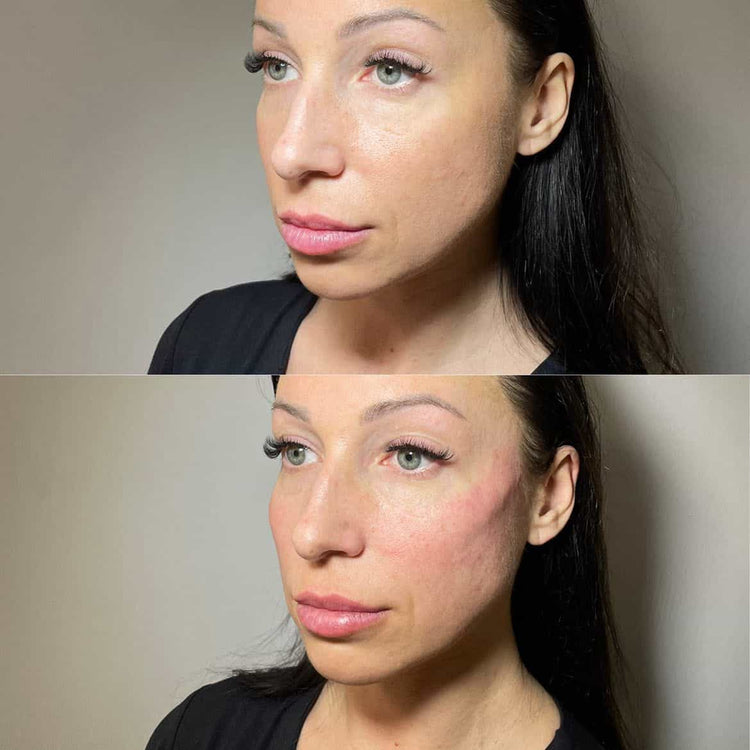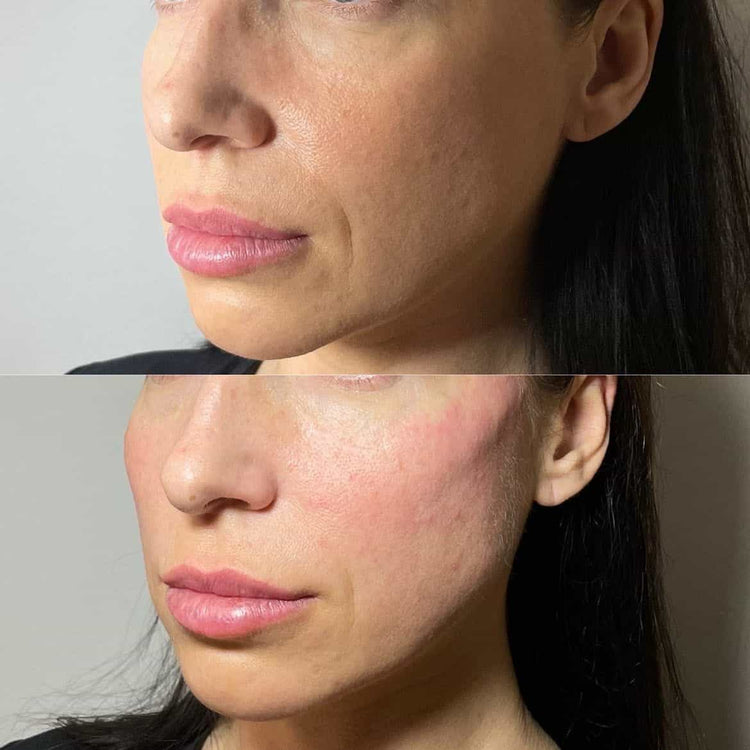Injectable Treatments
Non-surgical treatments for facial rejuvenation are becoming increasingly popular in the UK, offering individuals a less invasive alternative to traditional surgery. Injectable treatments, such as dermal fillers and botulinum toxin (Botox), have revolutionized the way we approach aging, allowing for subtle yet significant improvements in facial contours, wrinkle reduction, and overall appearance.
Dermal Fillers
Injectable treatments are a cornerstone of non-surgical facial rejuvenation. Dermal fillers, consisting of hyaluronic acid, are injected into areas needing volume enhancement. They can plump lips, smooth wrinkles around the mouth and eyes (smile lines and crow’s feet), restore lost cheekbone definition, and even address nasolabial folds, creating a more youthful contour.
Hyaluronic Acid Fillers
Hyaluronic acid is a naturally occurring substance in the body that helps maintain skin hydration and elasticity. When injected as a dermal filler, it attracts and holds water, effectively plumping up the skin and smoothing out wrinkles.
These fillers are generally safe and effective, with minimal downtime compared to surgical procedures. However, results vary depending on individual anatomy, lifestyle factors, and the amount of filler used.
It’s crucial to choose a qualified and experienced practitioner for injectable treatments to ensure optimal outcomes and minimize potential risks.
Calcium Hydroxylapatite Fillers
Another type of dermal filler gaining popularity is Calcium Hydroxylapatite (CaHA). CaHA is a biocompatible material that stimulates collagen production, leading to long-lasting results.
- CaHA fillers are particularly suitable for addressing deeper wrinkles and folds, such as nasolabial folds and marionette lines.
- Unlike hyaluronic acid fillers, CaHA is not absorbed by the body, providing a more permanent solution.
- Although generally safe, CaHA injections may cause temporary bruising or swelling at the injection site.
Botox
Botox is another popular injectable treatment used for facial rejuvenation. It works by temporarily paralyzing the muscles responsible for wrinkle formation. When injected into targeted areas, Botox prevents these muscles from contracting, smoothing out wrinkles and fine lines.
Botox is particularly effective in treating frown lines (glabellar lines) between the eyebrows, forehead lines, and crow’s feet around the eyes. Results typically last for several months, gradually fading as the toxin wears off.
It’s important to note that Botox should only be administered by a qualified medical professional who understands facial anatomy and can tailor the treatment to individual needs.

Radiofrequency (RF) Treatments
Radiofrequency (RF) treatments offer a non-invasive approach to facial rejuvenation. RF therapy utilizes radio waves to generate heat beneath the skin’s surface, stimulating collagen production and tightening skin tissues. This can result in a smoother, more youthful complexion by reducing the appearance of wrinkles, fine lines, and sagging skin on the face and neck.

Microneedling with RF
Microneedling with RF combines the benefits of microneedling and radiofrequency technology for enhanced collagen production and skin tightening. Microneedles create tiny punctures in the skin, stimulating the body’s natural healing process. Concurrently, radiofrequency energy delivered through the needles heats the deeper layers of skin, further boosting collagen synthesis and promoting skin rejuvenation.
This treatment can address a range of concerns, including wrinkles, fine lines, acne scarring, uneven skin tone, and laxity.
- Microneedling with RF is generally well-tolerated, although some mild redness, swelling, or discomfort may occur after the procedure.
- Multiple sessions are typically required to achieve optimal results, as collagen production takes time to build up.
Subcision
Subcision is a non-surgical treatment used to address acne scarring and facial wrinkles. It involves inserting a needle beneath the skin to break up fibrous bands (bands of tissue that tether the skin) that pull down on the skin, creating indentations or depressions.
By releasing these tethered areas, Subcision allows the skin to lift and appear smoother. Subcision can be used alone or in combination with other treatments like dermal fillers to improve the appearance of scars and wrinkles.

Like other non-surgical procedures, Subcision typically involves minimal downtime. However, it is important to consult with a qualified practitioner to determine if this treatment is suitable for your specific needs.
Fractional Laser Resurfacing
Fractional laser resurfacing is a minimally invasive procedure that uses a laser to create tiny, controlled wounds in the skin. These micro-injuries stimulate collagen production and cell turnover, leading to improved skin texture, tone, and firmness. Fractional lasers can target various skin concerns, including wrinkles, fine lines, acne scars, uneven pigmentation, and sun damage.
There are different types of fractional laser resurfacing, each with varying levels of intensity and penetration depth. Some lasers utilize ablative technology, removing the top layers of skin, while others employ non-ablative techniques that heat the deeper skin layers without causing epidermal damage. The choice of laser and treatment parameters depends on the individual’s skin type and desired outcome.
Fractional laser resurfacing generally requires multiple sessions spaced several weeks apart to achieve optimal results. Recovery time varies depending on the intensity of the treatment, but most patients experience mild redness, swelling, and peeling that subsides within a few days.
Platelet-Rich Plasma (PRP) Therapy
Platelet-Rich Plasma (PRP) therapy is an innovative non-surgical treatment gaining traction for facial rejuvenation in the UK. This technique harnesses the regenerative properties of a patient’s own blood to stimulate collagen production and enhance skin elasticity.
During a PRP procedure, a sample of the patient’s blood is drawn and processed in a centrifuge to separate the platelet-rich plasma from other blood components. The concentrated PRP is then injected into targeted areas of the face, such as wrinkles, acne scars, or thinning skin on the cheeks.
Platelets contain growth factors that promote cell regeneration and tissue repair. When injected into the skin, these growth factors stimulate collagen synthesis, leading to improved skin firmness, reduced wrinkles, and a more youthful appearance.
PRP therapy is generally considered safe and well-tolerated. However, multiple sessions are usually required to achieve optimal results, as collagen production takes time.
Mesotherapy
Mesotherapy is a non-invasive treatment that involves the injection of a cocktail of vitamins, minerals, enzymes, and other beneficial substances into the skin’s middle layer (dermis). These ingredients are designed to nourish and revitalize skin cells, stimulating collagen production, improving skin tone and texture, and reducing the appearance of wrinkles, fine lines, and other signs of aging.
Mesotherapy can be customized to address specific skin concerns. For example, a treatment might focus on brightening the complexion, tightening loose skin, reducing cellulite, or promoting hair growth.
The injections are typically administered using very fine needles, which minimize discomfort. A series of sessions is usually recommended for optimal results.
Chemical Peels
Chemical peels are a popular non-surgical treatment for improving skin texture and tone. They involve applying a chemical solution to the skin, which exfoliates dead skin cells and stimulates collagen production. There are different types of chemical peels, ranging from mild to deep, depending on the strength of the chemical used.
Superficial peels are the gentlest type, typically using alpha-hydroxy acids (AHAs) like glycolic acid or lactic acid. They target the surface layer of skin and can improve the appearance of fine lines, wrinkles, acne scars, and hyperpigmentation.
Medium-depth peels go a bit deeper into the skin and often use trichloroacetic acid (TCA). These peels can address more significant concerns like moderate acne scarring, wrinkles, and uneven skin tone.
Deep peels involve using stronger chemicals, such as phenol. They are reserved for severe cases of acne scarring or sun damage and require a longer recovery period. Chemical peels can be tailored to individual skin types and concerns, and it is essential to consult with a qualified dermatologist or esthetician to determine the most suitable type of peel.
- Why Do My Marionette Lines Look Worse After Fillers? - November 10, 2025
- What Is The Best Procedure For Neck Tightening? - November 7, 2025
- What Are The Best CBD Gummies For Mental Clarity And Focus? - November 5, 2025
